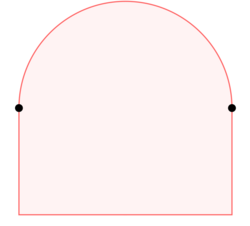Exposed point
This article does not cite any external source. HandWiki requires at least one external source. See citing external sources. (September 2019) (Learn how and when to remove this template message) |
In mathematics, an exposed point of a convex set [math]\displaystyle{ C }[/math] is a point [math]\displaystyle{ x\in C }[/math] at which some continuous linear functional attains its strict maximum over [math]\displaystyle{ C }[/math]. Such a functional is then said to expose [math]\displaystyle{ x }[/math]. There can be many exposing functionals for [math]\displaystyle{ x }[/math]. The set of exposed points of [math]\displaystyle{ C }[/math] is usually denoted [math]\displaystyle{ \exp(C) }[/math].
A stronger notion is that of strongly exposed point of [math]\displaystyle{ C }[/math] which is an exposed point [math]\displaystyle{ x \in C }[/math] such that some exposing functional [math]\displaystyle{ f }[/math] of [math]\displaystyle{ x }[/math] attains its strong maximum over [math]\displaystyle{ C }[/math] at [math]\displaystyle{ x }[/math], i.e. for each sequence [math]\displaystyle{ (x_n) \subset C }[/math] we have the following implication: [math]\displaystyle{ f(x_n) \to \max f(C) \Longrightarrow \|x_n -x\| \to 0 }[/math]. The set of all strongly exposed points of [math]\displaystyle{ C }[/math] is usually denoted [math]\displaystyle{ \operatorname{str}\exp(C) }[/math].
There are two weaker notions, that of extreme point and that of support point of [math]\displaystyle{ C }[/math].
 |


